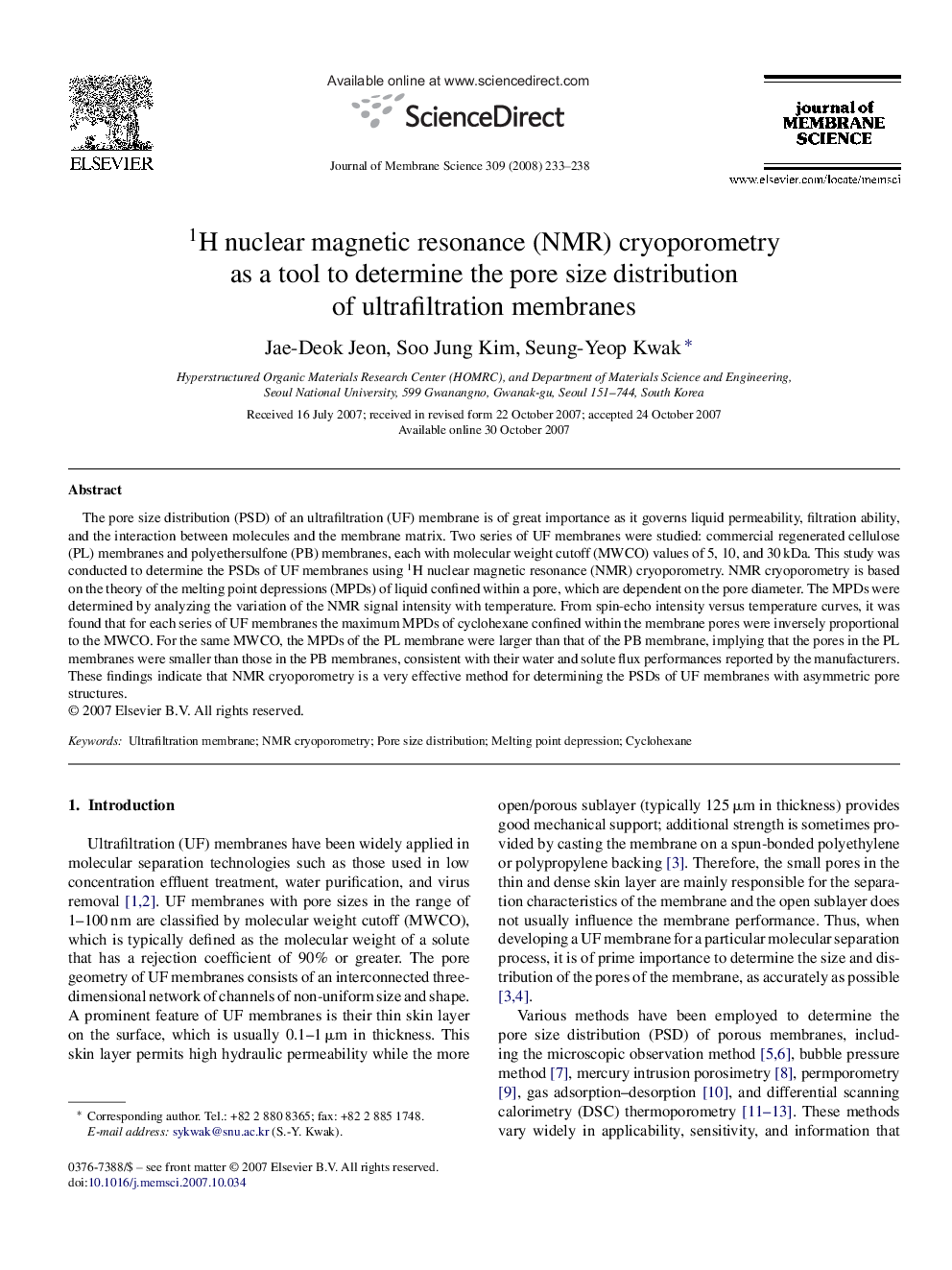| Article ID | Journal | Published Year | Pages | File Type |
|---|---|---|---|---|
| 638263 | Journal of Membrane Science | 2008 | 6 Pages |
The pore size distribution (PSD) of an ultrafiltration (UF) membrane is of great importance as it governs liquid permeability, filtration ability, and the interaction between molecules and the membrane matrix. Two series of UF membranes were studied: commercial regenerated cellulose (PL) membranes and polyethersulfone (PB) membranes, each with molecular weight cutoff (MWCO) values of 5, 10, and 30 kDa. This study was conducted to determine the PSDs of UF membranes using 1H nuclear magnetic resonance (NMR) cryoporometry. NMR cryoporometry is based on the theory of the melting point depressions (MPDs) of liquid confined within a pore, which are dependent on the pore diameter. The MPDs were determined by analyzing the variation of the NMR signal intensity with temperature. From spin-echo intensity versus temperature curves, it was found that for each series of UF membranes the maximum MPDs of cyclohexane confined within the membrane pores were inversely proportional to the MWCO. For the same MWCO, the MPDs of the PL membrane were larger than that of the PB membrane, implying that the pores in the PL membranes were smaller than those in the PB membranes, consistent with their water and solute flux performances reported by the manufacturers. These findings indicate that NMR cryoporometry is a very effective method for determining the PSDs of UF membranes with asymmetric pore structures.
